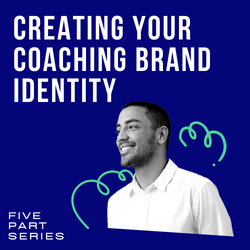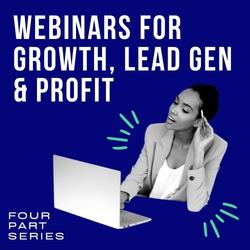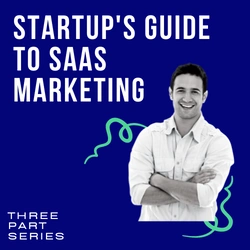Breaking Down The Elements Of An Effective And Sizzling Sales Page
Table of Contents
Getting traffic to your website is often viewed as the most difficult, but in truth, it’s not. Digital ads, social media ads and posts, solo ads, affiliate networks, lead generation campaigns all work to generate as much traffic as you need on demand. While you will have to pay for most of it, that investment will pay off if your sales page is strong.
It’s the sales page where the magic happens. This is the page that gives you a return on your marketing investment. It is on this page where we convert visitors to paying customers – it must not be overlooked.
If you have strong traffic but low conversions, look at your sales page and make some changes.
Benefits Of A Strong Sales Page And Why You Need One
Unapologetically Selling
A good sales page can only exist in one place – the sales page itself. If you were to include the text from your sales page in your social media posts, it would not be acceptable. You would lose followers and the comments will be harsh (but not wrong).
The reason for this is simple. Anywhere other than your sales page, people have not decided they are interested in your product or service. You keep the full force of your sales message contained to the page that exists only to those who have shown interest.
Direct Representation
A good sales page will present your product in a direct way. This ensures visitors know exactly what it is you are selling, what the value is for them, and how it will improve their life in some way.
Boast The Benefits Without Holding Back
Only on a sales page are you expected to directly list the benefits of your product or service – all of them. If your product has 12 benefits, you list them all. In a marketing campaign or social media post, you would never list all. That would be crude and unless interested, no one would read all of them.
People want to know what they are getting before they buy. Be direct, but do not come across as desperate or trying too hard to make a sale (even if you are). You have a good product, let them know that. Visitors to your sales page have already shown interest – that’s half the work done.
Ask For The Sale
Never forget this. You must always directly ask for the sale. Discretion or shyness will not win you customers at this point.
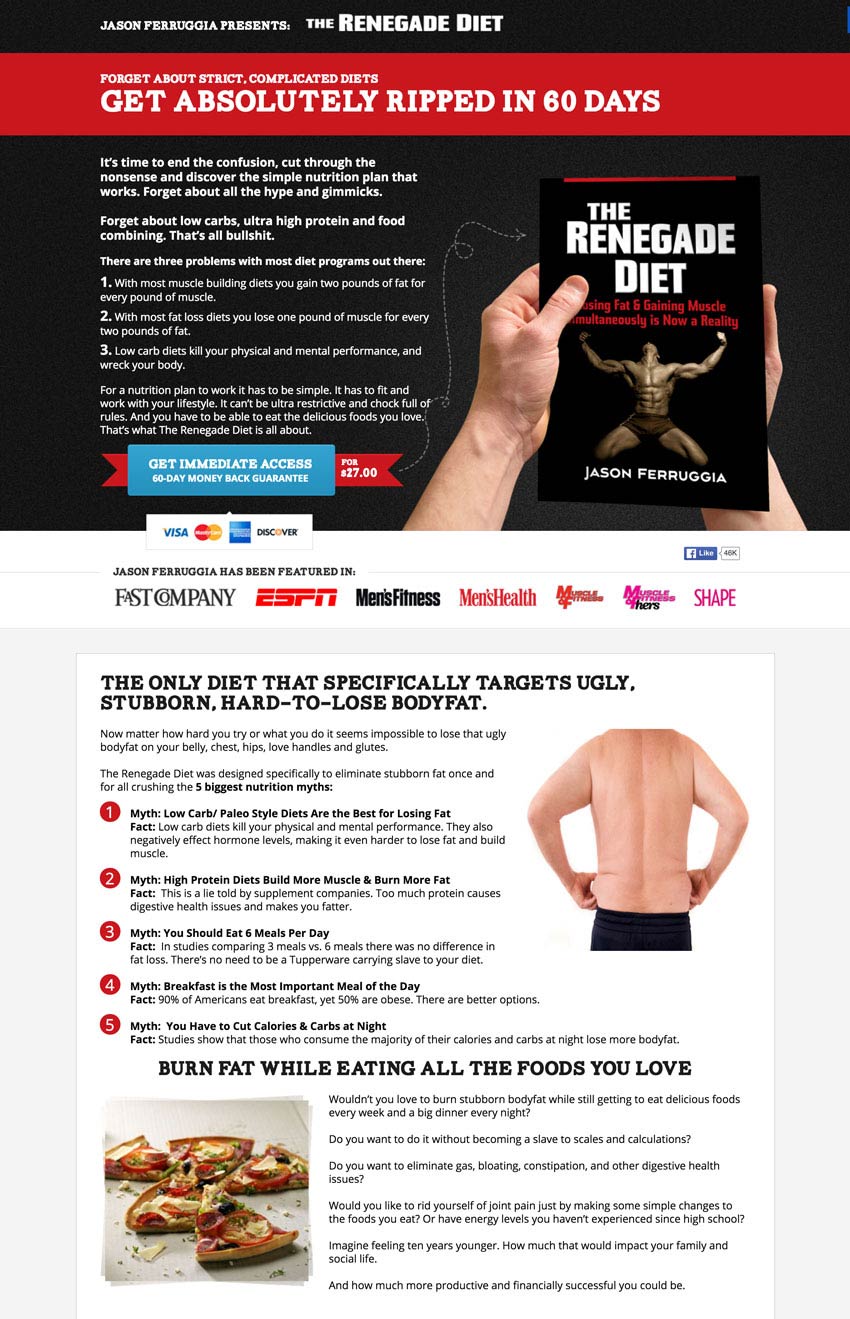
The Copywriting
Writing sales copy, especially the first time, can be daunting and intimidating. And you’ll feel pressure to pump out the most converting copy you can to maximize those digital marketing dollars.
There are two ways to go about this for a beginner:
- Learn best practices and do it yourself.
- Hire a professional the first time and use his or her work as a template for all your future sales pages.
Writing Your Sales Page Yourself
If you have chosen to write your sales copy yourself, my hat is off to you. That said, please understand that most people do not have the ability to write this type of copy without first learning how to do so.
Fortunately, we live in the digital age of YouTube, helpful e-books and online training.
It’s imperative that you invest the time needed to learn how to write effective and compelling sales pages. If you plan or expect to write many of them – invest the time in learning the craft, and you’ll receive dividends for life.
Let’s assume that you have a decent understanding of what sales copy is. Or you just completed your training.
You know that this is the content that is designed to sell your product or service. Whereas on other areas of your website you
will be using a non-sales tone. The rest of your site is designed to build your brand through authority and trust. Only on the sales page will you directly be selling.
Before you sit down and start writing your sales copy, take some time and review quality sales pages on other sites. What sales pages have converted you in the past? Review them and make notes.
Search your competitors’ websites and examine their sales page. Ask yourself whether this page convinces you to buy?
Write Once, Test and Reuse
Once you have your sales page live, start split-testing it almost immediately. Tweak the text, switch out the actionable words you’re using on your buttons, alter the layout, etc. Once you have a page after a month or so of testing that is converting higher than your previous versions, you have your most effective sales page.
You can now use this high-converting and test sales page as a template for all your future sales pages.
This provides you a basic sales page template. You can now customize it for each of the products you have.
The structure, the pictures or images, and even some headlines can remain the same from one product to the next.
The difference will primarily be in the wording.
Customizing pages this way is easy to do and will save you countless hours of work. If the new product or service is geared to a different demographic from the original sales page, you will need to tweak and test all over again. Do this until you know you have the highest converting version of the page.
Outsourcing Your Sales Copywriting To A Professional
Before you immediately stop reading this section because it’s expensive, and you’d rather spend on marketing than a professional copywriter – I ask that you keep an open mind.
Outsourcing to an expert who has a proven history of writing compelling and converting sales pages will be costly. Expect to spend at least $500 – $1,000 for a real expert who is fluent in English.
But consider the benefits before you decide to do it yourself:
- An expert has a history of success, so you know you will launch with a converting sales page and will maximize ROI of your digital ad spend faster.
- A professional copywriter will save you dozens of hours of training on how to write sales copy. Imagine the things you could do with that extra time instead.
- You can reuse the same sales page you paid for time and time again. You bought yourself a professionally written template, use it as often as you can.
I wrote my first sales page myself. It didn’t convert well, and before I knew it I had spent $350 on ads to drive traffic to the site. I could have instead invested that money with a marketing copywriter, which is exactly what I did.
I spent $800 on Upwork for a complete, professional rewrite of my sales copy. My conversions skyrocketed from 4% to 13%, which meant my customer acquisition cost decreased by over 300%.
I also used the services of Fiverr Pro experts to rewrite my autoresponder sequence. Fiverr Pro cost me $400 whereas Upwork was over $700. I saw the portfolio of the Fiverr Pro expert and felt quite comfortable with her expertise, so I saved myself some money.
The investment paid off within two weeks. She rewrote the entire autoresponder sequence I had written in the beginning – all ten days. Email conversions doubled.
The biggest long-term return on both of those investments were what I learned from their work. Now I have a template for a powerful, high-converting sales page and ten days worth of expertly written sales emails.
The Components Of An Effective Converting Sales Page
- The Introduction
- The Headlines (you want many)
- The Credibility (also known as Social Proof)
- The Benefits
- The Features
- The Bonus
- The Value Build-Up
- The Ordering Section
- The Sales Ask
- The Postscript
The Introduction
The introduction is a key component in your Internet marketing sales page, potentially the most important. The fact is, if you cannot grab them now, they will not continue on, and most likely, will never buy from you. Therefore, your introduction needs to count, and you should spend time on it.
The first few sentences have to find a way to pull at the heartstrings of your reader. You want them to grab the attention of the reader and make them say, “Wait…I need to read this…”
The introduction is not a hard sell. At this point, you want to draw them further into the sales page content so that you can show them why what you have to offer is the best product to solve their problem.
To write the introduction, keep in mind what your product provides to the reader. Do not list that here. Rather, consider what type of emotion or result the product has to offer to the visitor. In the copy coming, you will showcase what your product is, so at this point, you do not need to mention it. Rather, you want to present your case for why it is valuable.
Choose wording that shows the reader the benefits of your product or service. You want to describe how they will feel when they own it. You want to tell them how it will help to improve their life.
- Will it give them relief from a health issue or pain?
- Will it help them find their passion?
- Will it provide them with the means to build financial security?
- Will it reduce their stress?
- Will it give them the life they have always dreamed of?
How will their life improve when they buy and then use the product you are offering them?
The introduction should cover those aspects within a few sentences or up to two paragraphs. Do not get long-winded here, either. The introduction is placed directly
under the headlines, usually towards the top of the initial page. Your goal is to get them to scroll down after reading to this point. Drawing on emotions is the best way to
accomplish that goal.
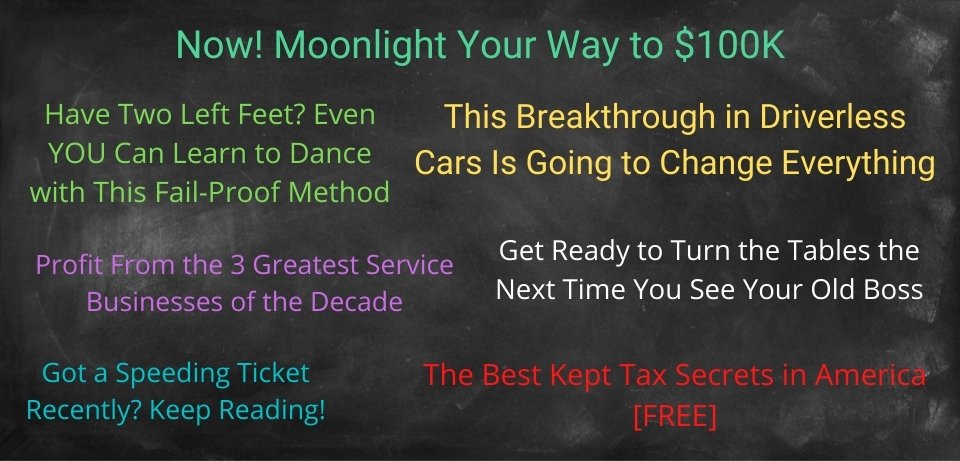
The Headlines
Headlines are a bit more complex than you may think.
They are actually comprised of various types of headlines. Each is just as important, in its own way, as the one before it, and you will want to use them all.
An initial headline, called a pre-headline, is used to attract your target market. This headline is specifically able to tell your readers that you have something that they want and need.
A secondary headline is the main headline. This headline is an important part of your sales page. It should be in larger font than anything else on the page. You do not want anything else on your sales page to pull away from this main headline. From a WordPress or HTML viewpoint, this is your H1 headline and should be the only H1 heading on the page. Specifically, the main headline is designed to tell the reader what the main benefit you are offering is.
The third headline is an optional one, it’s your clarifying heading. It is in a smaller font, located under the main headline. The goal of it is to give some clarification to the main headline or to elaborate on it as needed. Not every sales page needs this type of headline, and if it is overused, it can detract from the main headline. Personally, I’ve found success using a clarifying headline, just be careful to use it properly.
When writing headlines of any type, keep them concise and to the point. Long headlines work on content such as a blog post, but not when you’re trying to make a sale. People won’t read them if they’re too drawn out. Keep them short and snappy to keep your would-be customer’s attention. You want the headline to grab the reader and pull them in to what you have to offer.
When you’re done writing your headlines, read only the headlines on your sales page and nothing else. Do they independently relay all the most important points you’re trying to make to close a sale? Keep in mind, many people are headline readers only, meaning they’ll read your headlines and some of your bullet points, so make them strong.
The Credibility
We also call this social proof. And this is the most element that people fail to do properly. This is a simple area with a huge benefit.
Here’s the question: “If I was purchasing a product from a sales page online, would I buy from anyone?” Typically, the answer is a quick “no”.
They want to know who is offering the product, or service. They need to know why they can trust their expertise and authority on the subject. And a potential buyer needs to feel secure that you can deliver the product you have promised in your sales copy. What better way to show them than with social evidence.
It’s important to display your credibility online. People know there are plenty of scams out there, and everyone is afraid of getting tangled up in one and losing their money. No one likes the idea of handing over money to someone making lots of promises but has no background to deliver on them.
This is why it’s so important to place the “credibility check” towards the top of your sales page. Prove your credibility as soon as possible and people will keep reading.
There are plenty of ways to prove your credibility online these days. Pick one or two and move onto the next component.
Use testimonials that show real results from the product or service that you are offering. This helps people to know they are getting something of value. Be sure that these include the full name of the person giving them and a photo if available. Taking screenshots of positive reviews of your product or service (or you as a person) from Facebook or Twitter is very powerful.
Quote experts or show expert information. For example, you can quote (using proper references, of course) a study done that shows the value of your product or service.
Use specific numbers and details here. You do not want to be vague with “many” or “lots of people” as numbers matter. Instead, if you say, “In a study done by ABC University, 9 out of 10 people…,” you will get a better result.
State your credentials. Specifically list any degrees, education, or other information about yourself that is related to your product or service. This immediately shows your worth.
You can explain product test results here too. Be sure that all information is correct and verifiable by the reader if he/she needs to do so.
List favorable reviews of your product from online or offline sources, such as magazines, newspapers, or well-respected websites online. Authoritative websites are particularly important here.
Give your contact information. How can they contact you (email, phone, and address if you have business contacts) if they have questions or concerns?
You don’t need to use all of these methods, but try and mix and match a couple on your page. The more social proof you display, the higher your credibility.
Below is an excellent example of credibility on a sales page using screenshots of tweets as social proof.

The Benefits
Now you have come to a point on your sales page where people are interested. They know what your product is, and they have seen that it seems to be well-respected. Now, they want to know what in the world it actually offers. What are the benefits of the product?
This section is best written in bullet format. If you have been reading thus far, we have included bullets in this eBook. The reason for using bullets is simple – people are likely to read them. People do not like long paragraphs.
They want to know the facts, plain, simple, and quickly. Bullet points are highly attractive and easy to include. They break up the text and give simple statements. In this section, use bullets to outline the benefits of the product. Do not point out features here. Rather, list the benefits the product offers. You’ll tackle the features next.
- Saves you 20 percent of your grocery budget…
- Gives you peace of mind…
- Easy to use…
Of course, your bullet points need to be specific to your product, and they should be more elaborate. Put them in order from the most important or the highest priority down. It is okay to list many here. In fact, listing too few will hurt your sales page. People need to connect with just one of these bullet points to get them to buy. If you list only a few, you are limiting your chances of connecting with some people.
Remember that every visitor to your website is there for his/her own reason. You may be giving them a product that saves them money, but for each person, the benefit is different.
- Be able to pay down debt…
- Be able to spend more time with your kids rather than working long hours…
- Be able to put money into savings…
- Be able to invest in the stock market…
- Be able to buy a luxury yacht…
Every person has that one hot spot. You need to use bullets to attract the right hot spot for every visitor you have.
The Features
And this is where you’re going to go into detail about the features. You have covered the benefits, now you want to talk up your product in detail.
You want this section to outline what it is that you are offering and what it contains. For example, perhaps you are marketing an eBook on making money online. This is the section where you should list what is included in the eBook.
There’s no need to give away the entire contents of the book. Rather, you want to tempt them in the proper way. For example, in your eBook, you may be sharing websites that offer freelance contract work. You do not want to list what those websites are here. Instead, you may include something like: “Learn the top 42 websites that offer freelance work every single day.”
You use this to draw them in. They can’t get this information unless they buy the book from you. Do this same type of thing for every one of the features in your product. You can again use a bullet style to list them. If you need more room to go into detail, you can do that as well, but do not overdo it in terms of information. Use the features of your product or service to draw them in. Don’t disclose all the details, though.
Do list what the buyer is getting. After all, you want the reader to be fully aware of what he or she is getting in return for their money. But they can’t get it until they complete the purchase.
The Bonus
Your product or service very well may be good enough to stand on its own without the need of an added incentive. But, trust me, that doesn’t matter. Offering a bonus has nothing to do with the quality of your product or service. These days, it’s expected.
People love bonuses, and they want to feel that they’re getting something free that makes the purchase an even better deal for them.
If you were to walk into a retail store to look at two or three different brands of a product, all of which were similar, but one contained a free bonus, which product would you buy?
Beauty brands have been doing this for over a century. Purchase this perfume and receive a free branded makeup brush. It works.
People want to get something for nothing because it validates their purchase. Essentially, it validates their decision to buy from you.
Offer a bonus, something free with a perceived value that is related to your product or service. This will close more sales and lead to higher rates of buyer satisfaction.
A few things to keep in mind:
Make sure to include something that has real value to it. There’s no benefit to adding something that has little legitimate value to your reader. They’ll know if your “bonus” is worthless, and you’ll lose the sale.
Do provide a description of what the item is. For example, you may be selling an eBook on making money online. But, you offer a free guide to saving $500 a month on household expense.
Figure out what the value of this product is and emphasize it. If you sold it as a standalone product, what would the value of it be? You can find similar guides or resources online to come up with this figure. In the coming portions of your sales page, you will need to know the worth of the bonuses. Some Internet marketers like to offer multiple bonuses.
How many bonuses should you offer?
There’s no drawback to having more than one, but I strongly suggest you keep the number of bonuses practical and believable.
One or two strong bonuses with real value to your customer is enough. If you’re offering five or ten bonuses, people will start to assume the real product you’re selling is worthless.
Surprisingly, bonuses can sell the package for you at times. Sometimes, people will buy a product or service just to get the bonus. Of course, for this to happen, you need to ensure it has real value.
If I was releasing a course about copywriting or digital marketing, I could turn the very article you’re reading right now into an ebook. Of course, I’d have to include diagrams and strong illustrations along with lots of examples for visual learning, but the copy is already written. In fact, using your pre-existing content as the basis for a strong bonus is an age-old art. Here’s what the bonus section of my sales page may look like:
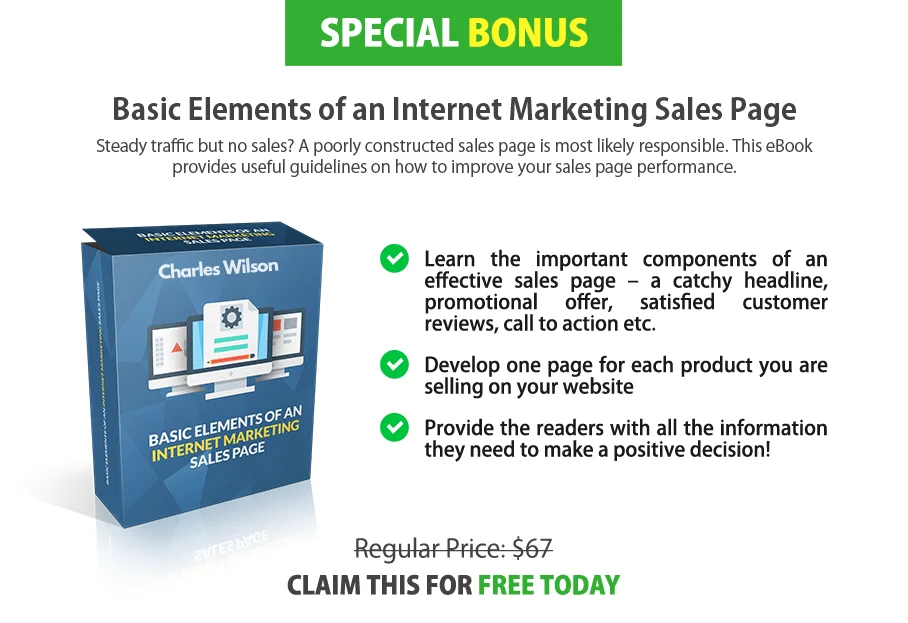
The Value Build-Up
When your visitor reaches this section, they know what you have to offer, they know what they are getting, and they are considering buying. The reason many will turn away from a product is because they do not see the value of the product or service in terms of dollars and cents. You need to show them that here.
The value build-up section allows you to communicate to the reader that your product is worth whatever your price is. At this point, you should not have listed a price, nor will you do so yet. Rather, you need to show the value of the product.
Now, there are several ways you can accomplish this. Just make sure you detail as much as you can in this section.
1. Compare your product to a similar product online. Show how your product has more to it or is a better value to the reader. “We go farther than XYZ Product by giving you an additional 3 chapters on_____”. Drawing a direct comparison between your product and a competitor’s allows you to showcase your comparable value and preferred pricing.
2. Show that another product is more expensive and that it provides less benefit to the reader. Perhaps it has fewer features or details. Please keep in mind that you don’t need to compete directly with price. If your product is a little higher priced – tell the reader why that is and demonstrate, directly, why they should buy your product instead of saving a few bucks on an inferior product.
3. Give your visitor a guarantee whenever it is possible to do so. “There is no risk. We provide a full money-back guarantee if you are not satisfied within the first 30 days.”
4. If people have any known objections to your product or service, list them here and explain why they’re not relevant. Be specific and direct and break it all down. State why what they are worrying about (as you have assumed) is not something to worry about. This also informs your potential customer that you understand their misgivings and have already considered and adjusted your product or service accordingly.
5. In some way, show that your product or service is highly valuable and scarce. For example, this may be a limited time offer or there may be a deadline for ordering the product before you pull it or increase its price. You want to create the urgency in the reader that they have to buy right now, or they will lose out on a great opportunity. Keep in mind, if you create scarcity, you must follow through on your threat if you’re trying to build a brand based on trust and authenticity. If you are only offering 50% off your new ebook for the first 48 hours, stick to it. When the clock hits 48 hours, increase the price. Now, that doesn’t mean you have to double the price – just don’t offer it for 50% off. After all, 30% off is still a good deal. You’ll make sales without losing trust.
One helpful way to get the visitor to realize the value of your product is to go back to those heartstrings again. Show them what will not change if they do not make this purchase from you. For example, show them that if they do not buy your eBook on becoming a successful day trader, that they will continue to work for someone else. They’ll have to worry if their job will be cut or wonder how they’ll pay the bills. Show them that this can change when they buy your product.
The Order Section
Now you have gotten to the point of getting them to buy. After all of that work, it would be devastating to lose them now.
The good news is that you’re almost at the finish line – you almost closed another sale. Just a bit more to go.
The ordering process has to be incredibly easy. It can’t take more than a couple steps. Every additional step is an opportunity to lose the buyer. It’s helpful to pretend that your visitor has never purchased anything online before. They don’t know how to buy, and they are of course worried about giving out their credit card information.
Give them step-by-step directions. Such as, “to order, simply follow this link to our secure website where you can pay by credit card, PayPal, or several other methods.”
Give them more than one option of payment. You want to make this easy no matter what type of payment they want to send to you.
Keep in mind that you can use several methods no matter what type of payment option you prefer. This includes using PayPal, Stripe, call-to-order services (where they actually call a number to place an order) or even mail-in check order forms.
You will want to ensure that you are using a secure website and have set up the process so that it is just a few clicks away. Do make this as easy and safe for your visitors as you can.
The Sales Ask
I can’t tell you how often people forget this critical step. They forget to ask for the sale.
You may think, “Isn’t my entire sales page doing this for me?”
The fact is, you need to communicate with your readers that this is a fantastic opportunity throughout your sales page. But, when you come down to the end, you need to state that you want them to buy from you!
- Order Now!
- Click Here To Buy Now!
- Ready To Buy? Do So Now
- Don’t Let Time Run Out
- Buy Now Through Our Secure Site
These are just a few of the terms you can use. Whatever you do, don’t forget to ask for the sale. One question some people ask is about placing “Buy Now” buttons on other areas of the sales page. For example, after you list the features of your product or service, you may want to insert a “Buy Now” button. You can do this on your sales page, but keep it simple and make sure it fits into the appropriate section.
In other words, don’t flood your website with “Buy Now” messages everywhere. This makes your sales page, and consequently, your brand, look desperate. Rather, just include a few simple buttons where it seems appropriate. You should not add these more than one or two times at most.
The Postscript

Did you roll your eyes or take a deep breath and sigh? I understand. You thought we were done with the sales page, but there’s one more final part.
This is the final spot where you can add more information or deliver that final sales message to seal the deal. We call this section the postscript.
It’s the “P.S.” section of your sales letter.
This section can be very important. It is displayed right after your sales page’s ordering section, and often, the order button and this P.S. appear on the same area of your customer’s screen.
The postscript is like a review. It’s a quick summary of what your product is, what benefits it offers, what features you are giving to the reader, and why it is of value to them. It is, in essence, a Cliffs notes version of your sales page. You want to ensure that your readers can once again understand all of these elements clearly.
The postscript should be no more than one or two short paragraphs. You don’t need to oversell here, and if you do, you’ll sound desperate and lose the sale. Simply keep it short, but still give the reasons why they need your product.
At the end of the postscript, ask for the order again. “Hurry…place your order today, so you don’t miss out on this limited time offer.”
Put It All Together
These are the components of your Internet marketing sales letter. Before you begin writing it, go to your competitors or products you have purchased in the past and look at a few examples of effective sales pages.
Pay attention to the style used and the overall format. You’ll notice they’re using the fundamental format I’ve taught you here. Take some notes and pay special attention to the words they use to sell.
There’s a reason this format has been around so long – it works. It will work for you as well.




Content marketing is the backbone of the biggest success stories over the last decade. I’m referring to companies like Zomato, Canva, ThinkGeek, HootSuite and even Blendtec. It’s not surprising that so many brands are focusing on content marketing, given the average ROI is twice any other type of digital marketing. Keep Learning >

Everyone who is selling something could use a strong info-product to compliment their brand and boost engagement. Whether you charge for it upfront or not is irrelevant. I’ve put together my 18 step cheat sheet for creating awesome products. Keep Learning >
